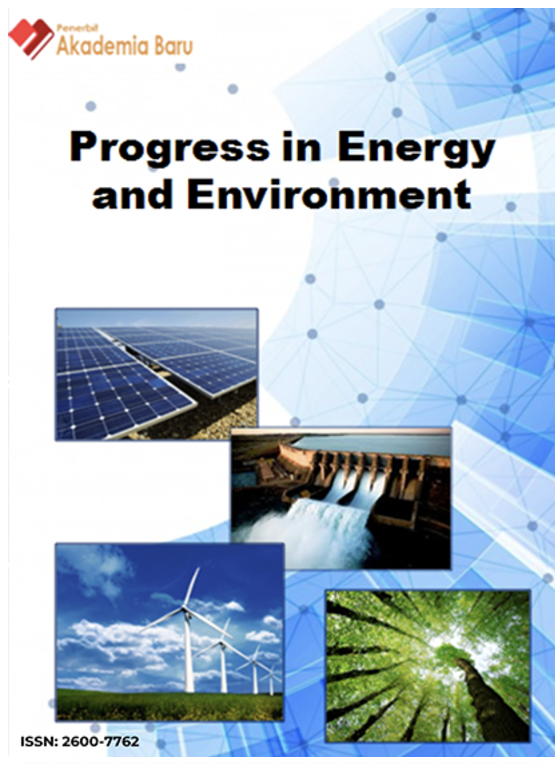
Special Issue: Advances in Biomass Energy Research
SPECIAL ISSUE EDITORIAL BOARD
Special Issue Editor-in-Chief:
Assoc. Prof. Dr Zul Ilham Zulkiflee Lubes ![]() (Universiti Malaya, Malaysia)
(Universiti Malaya, Malaysia)
Special Issue Editors:
Assoc. Prof. Dr Fadjar Goembira ![]() (Universitas Andalas, Indonesia)
(Universitas Andalas, Indonesia)
Asst. Prof. Dr Rosnah Abdullah ![]() (Universiti Brunei Darussalam, Brunei)
(Universiti Brunei Darussalam, Brunei)
Dr Wan Abd Al-Qadr Imad Wan Mohtar ![]() (Universiti Malaya, Malaysia)
(Universiti Malaya, Malaysia)
Submission open: 1st May 2023 | Submission deadline: 31st December 2023
Keywords: Bioenergy | Biomass | Biofuel l Green Energy Transition l Energy Innovation
DESCRIPTION
The transition towards the use of renewable energy sources as sources of energy has been influenced by a number of different variables. The limited supply of fossil fuels and their burning for energy production are contributing factors in the rise in the emission of greenhouse gases (GHG), which in turn contributes to global warming and climate change [3].
Biomass has surfaced as a promising source for the generation of energy among the numerous sources of renewable energy, particularly in the developing countries [4]. This is especially true in the case of developing countries as it is so readily available and relatively economical. The bioenergy that is obtained and converted from various biomass resources, such as plants, animals, and even microorganisms, is referred to as biomass energy (Fig. 1). Forestry waste, agricultural residues, crops grown for their energy production, wastewater, microbial biomass, algal biomass, and animal waste are among the examples of these [5,6].
- Bioenergy and biofuel production from various feedstocks
- Biomass conversion technologies
- Biorefinery processes and integrated biorefineries
- Sustainable bioenergy systems and their economic, social, and environmental impacts
- Policy and regulatory frameworks for bioenergy development and deployment
- Life cycle analysis and sustainability assessments of bioenergy systems
- Advances in bioenergy storage, distribution, and utilization
- Biomass extracts for energy generation
REFERENCES
[2] M.M. Alam, M.A. Aktar, N.D.M. Idris, A.Q. Al-Amin, World Energy Economics and Geopolitics amid COVID-19 and Post-COVID-19 Policy Direction: World Energy Economics and Geopolitics amid COVID-19, World Development Sustainability 2 (2023) 100048. https://doi.org/10.1016/j.wds.2023.100048.
[3] Z. Ilham, N.A.I. Saad, W.A.A.Q.I. Wan-Mohtar, A.A. Jamaludin, Multi-criteria decision analysis for evaluation of potential renewable energy resources in Malaysia. Progress in Energy and Environment 21 (2022) 8–18. https://doi.org/10.37934/progee.21.1.818.
[4] Z. Ilham, Chapter 3 - Biomass classification and characterization for conversion to biofuels, in: Value-Chain of Biofuels, Elsevier, 2022, pp. 69-87. https://doi.org/10.1016/B978-0-12-824388-6.00014-2.
[5] S.F. Acaru, R. Abdullah, & R.C. Lim, Sustainable valorization of wood residue for the production of biofuel materials via continuous flow hydrothermal liquefaction, Waste and Biomass Valorization (2023) 1-15. https://doi.org/10.1007/s12649-023-02074-y.
[6] S. R. A. Usuldin, Z. Ilham, A.A. Jamaludin, R. Ahmad, & W.A.A.Q.I. Wan-Mohtar, Enhancing biomass-exopolysaccharides production of Lignosus rhinocerus in a high-scale stirred-tank bioreactor and its potential lipid as bioenergy, Energies 16(5) (2023) 2330. https://doi.org/10.3390/en16052330.
SUBMISSION FOR SPECIAL ISSUE
The special issue submissions are open from 1st May 2023 to 31st December 2023. We accept original articles, review articles, case studies and short communications for the special issue. During the submission, kindly mention clearly that your article is submitted for the special issue instead of the regular issue, in the "Comments to Editors" or Cover Letter. All the submissions shall follow the submission instructions of the journal. Please contact the editorial members of the special issue if you have any queries.
Make a submission for this special issue
ARTICLES IN THE SPECIAL ISSUE











